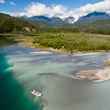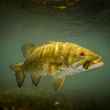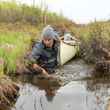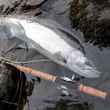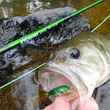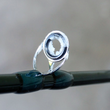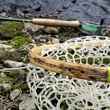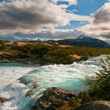As summer air temperatures in New England veer sharply from their northern roots most water courses warm beyond the tolerance of trout. With trout hunkered in thermal refuges the sulking trout angler has some options. There's opportunity on stillwater for largemouth, crappie and bluegills but that requires tactics and tackle that is foreign to many. In several renowned trout rivers smallmouth share the same neighborhood with their sleeker kin. With yin to trout's yang, smallmouth come alive when water temps suppress trout. While both are a fine distraction, truly tormented trout anglers seek the succor of a tailwater in the days after the mid-year solstice.
Last week I had smallmouth on the brain and was prepared to make the hour drive for a few hours fishing. The previous evening a summer storm rolled up the valley and created a muddy torrent while sparing neighboring, smallmouth-free watersheds. I could have scrapped the whole notion but my buddy Steve had planted a few seeds with solid tailwater intel.
Steve is one of those quiet anglers who goes about his business without calling attention to himself. Not knowing Steve you might dismiss the counsel of this unassuming gentleman. But he's committed to his craft, puts his hours in, and when Steve says that a #26 Olive will work until 6 p.m. and a #16 Sulphur spinner until dark, you stock your fly box, pack your car, and drive north.









